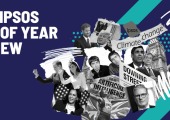Payday lending advertising research
The Department of Business, Innovation and Skills (BIS) commissioned Ipsos to conduct qualitative research with a mix of participants who had considered using a payday loan and those who were payday lending customers.
The objectives of the research were to explore the following issues in detail:
- The reasons why participants choose payday lending, including their financial situation and other factors which may have encouraged them to do so;
- The impact of payday loan advertising on customers’ decisions to choose these products, including the role of context, tone, language, images and placement; and,
- The potential for changes to payday lending adverts to change participants’ behaviour in regard to choosing payday loans.
By far the most common use of payday loans was to meet an urgent household need of some description. Only a small minority in the research used payday loans to pay for non-necessary expenses. Generally, participants who had taken out a payday loan typically reported that doing so was a “last resort”; they had done so because they lacked other viable credit options, and because their need for the money was immediate and critical at the time of taking out the loan.
Those who were able to access alternative sources of finance – and, crucially, felt comfortable in doing so – were less likely to take out payday loans. Friends and families were the most important source of alternative credit across all types of people interviewed. Most participants who had taken out a payday loan felt that loans from high-street banks were unsuitable for their needs due to bank loans being longer-term or more difficult to obtain than payday lending.
All participants were aware of payday loan advertising and had seen many different examples. Participants mentioned television adverts spontaneously most often – particularly on daytime television – but a minority had seen adverts via email. Wonga was the television advert most commonly recalled due to its reported ubiquity. There was a strong feeling that payday lending advertising was difficult to avoid on television, but, with the exception of the brand leader, Wonga, there was very little to differentiate lenders from each other.
In general, participants were highly concerned about the effect of payday advertising on vulnerable people. There was a strong feeling among participants that the adverts were more prevalent on daytime television, and there was widespread disapproval that the adverts were thought to be targeted at those out of work and short of money. Many participants were also concerned that payday lenders seemed to be concentrating their operations in deprived neighbourhoods.
Thinking as consumers, customers and potential customers were relatively disinclined to engage with information about the risk and costs of lending in advertising material. Adverts which disassociated payday lending with its negative connotations and sold the product to customers less aggressively were more successful with customers. Participants preferred to seek information about risks and costs of taking a loan on lenders’ websites. Their primary concern before taking a loan was to establish the relevant total cost of credit; websites which made this easy to do were strongly advocated.
Participants tended to be positive about the inclusion of modifications. There was a strongly-held view that the different modifications would be relevant to different types of people, and that this would be difficult to identify as it would be dependent on their circumstances and attitudes, hence all or a combination of the proposed messages would be necessary to use were such an approach to be taken.More insights about Public Sector


